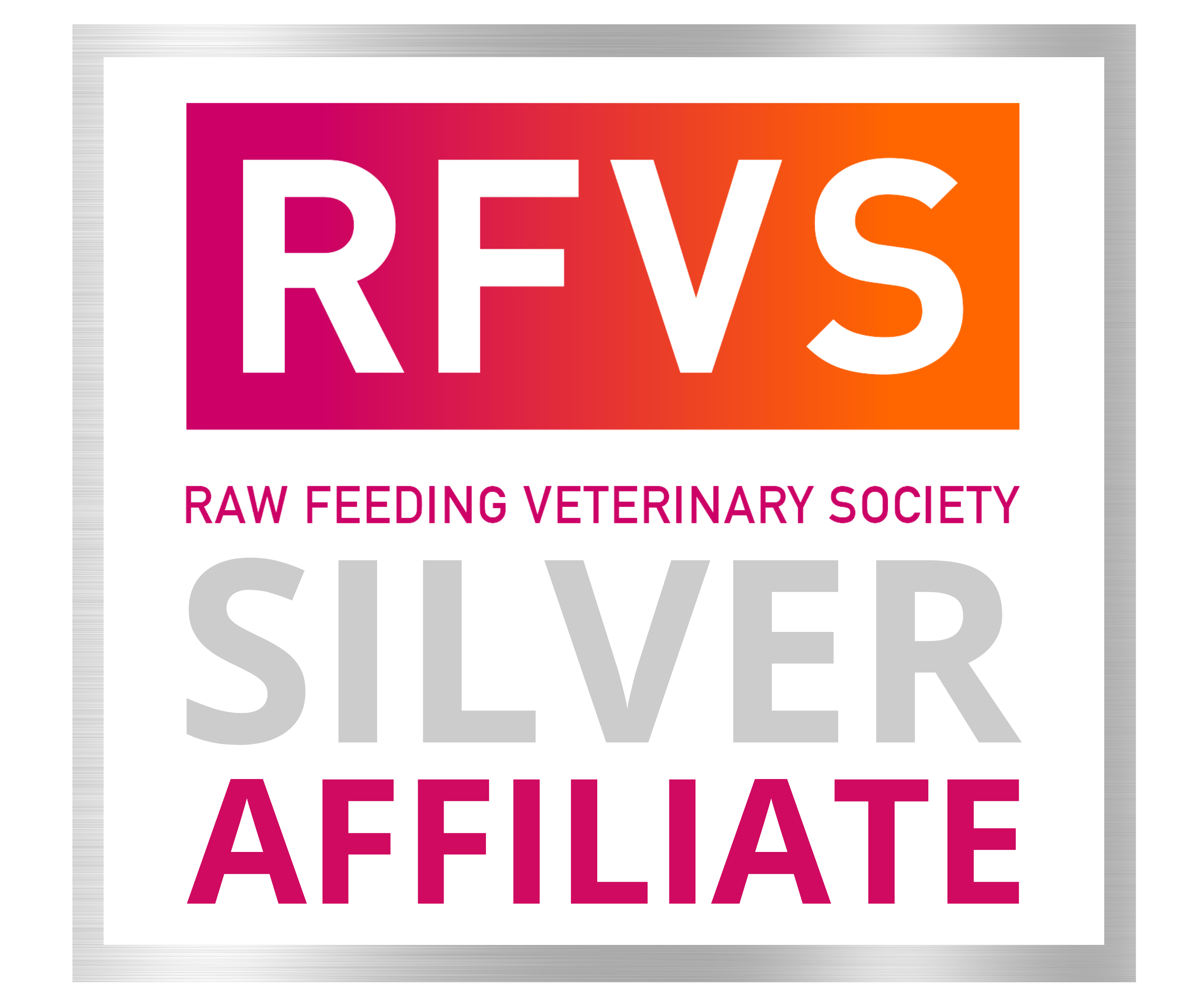Raw Feeding Pet Food Terms Explained: A Guide for Pet Owners
Switching your cat or dog to a raw diet can be transformative for their health, but the world of raw feeding comes with its own language. At Raw Essentials, we know how overwhelming terms like novel protein, Prey Model Raw, or dysbiosis can be when you’re reading labels or planning meals. Understanding these terms helps you feed your pet confidently, safely, and nutritionally optimally.
Here’s a breakdown of 10 key raw feeding terms every pet parent should know.
1. Novel Protein
A novel protein is a protein source your pet hasn’t eaten before, such as rabbit, venison, or possum. These proteins are often used for pets with allergies or sensitivities to common proteins like beef or chicken. Novel proteins can help reduce inflammation, support gut health, and make mealtimes safer for sensitive pets.
2. Species-Appropriate
A species-appropriate diet mimics what your pet would naturally eat in the wild. Cats, as obligate carnivores, require high-protein diets with essential amino acids like taurine. Dogs thrive on high-protein diets with a small amount of plant matter for fibre. Feeding a species-appropriate diet ensures pets get all nutrients in the forms their bodies are designed to digest and absorb.
3. Raw Meaty Bones (RMB)
Raw meaty bones are bones with meat attached, such as chicken necks or lamb ribs. They provide essential calcium and phosphorus, help maintain healthy teeth and gums through natural chewing, and support digestive health. Proper sizing and supervision are important to avoid choking or dental damage.
4. PMR (Prey Model Raw)
Prey Model Raw (PMR) is a diet fed in the same proportions as the whole prey animals cats or dogs would hunt in the wild. Typically, this is about 80% muscle meat, 10% edible bone, and 10% organs. PMR ensures pets receive naturally balanced nutrition without relying on synthetic supplements. Raw Essentials follows a PMR approach with careful attention to providing variety, gut health, and species-appropriate nutrition.
5. BARF (Biologically Appropriate Raw Food)
BARF stands for Biologically Appropriate Raw Food. This term emphasizes feeding pets raw, unprocessed foods that reflect their evolutionary dietary needs. BARF diets include raw meat, organs, bones, and some vegetables for dogs. The goal is optimal health, vitality, and longevity.
6. Dysbiosis
Dysbiosis refers to an imbalance in the gut microbiome, where harmful bacteria or yeast outnumber beneficial bacteria. This can lead to digestive issues, inflammation, and even systemic health problems. Feeding a raw, species-appropriate diet can help maintain a balanced gut microbiome and prevent dysbiosis.
7. Calcium & Phosphorus Ratio
Calcium and phosphorus are critical minerals for bone development, nerve function, and overall metabolism. In raw feeding, maintaining the correct ratio—typically around 1.2–1.5 parts calcium to 1 part phosphorus—is essential for optimal health and to prevent skeletal or kidney problems.
8. Prey Proportions
Prey proportions describe the composition of a raw diet based on the parts of an animal consumed in nature: muscle meat, organs, and bones. Following correct prey proportions ensures pets receive a balanced mix of macronutrients and micronutrients naturally.
9. Gastric Acidity
Gastric acidity refers to the strong acid in a cat’s or dog’s stomach that begins protein digestion. A healthy gastric acid environment is essential for breaking down raw meat and bones safely. Highly processed foods can alter stomach pH and impair digestion, making raw diets naturally more suitable for pets.
10. Mixed Feeding
Mixed feeding combines raw diets with other food types, such as wet or high-quality dry food. At Raw Essentials, we strongly advise against mixing raw and processed pet foods. While it might seem convenient, feeding both types of diets can cause digestive issues because your pet’s gastrointestinal system processes raw and processed foods differently.
-
Raw food is minimally processed, naturally enzymatic, and easier for the gut to break down, supporting healthy digestion and nutrient absorption.
-
Processed kibble is heavily cooked, often contains grains, starches, and additives, and requires different digestive mechanisms to break down.
When both are fed together, it can disrupt the digestive process, potentially leading to stomach upset, diarrhea, or bloating. For optimal gut health, we recommend feeding a consistent raw diet, allowing your pet’s digestive system to operate efficiently and maintain a healthy gut microbiome.
Why Understanding Raw Feeding Terms Matters
Feeding your pet a raw diet isn’t just about choosing meat—it’s about feeding a diet that is species-appropriate, balanced, and tailored to your pet’s unique needs. Understanding terms like PMR, BARF, and dysbiosis helps you make informed choices, avoid mistakes, and work confidently with experts to support your pet’s health.
At Raw Essentials, we’ve been feeding raw in New Zealand for over 18 years. With 17 retail stores nationwide and in-house veterinary and nutrition specialists available online and in-store, we provide expert guidance for every pet parent. Raw Means Raw, and knowing these terms ensures your cats and dogs thrive.
References / Further Reading
-
Schmitz, S., & Suchodolski, J. S. (2016). Understanding the canine intestinal microbiota and its influence on health and disease. Veterinary Clinics: Small Animal Practice, 46(1), 1–12. https://doi.org/10.1016/j.cvsm.2015.09.006
-
Middelbos, I. S., et al. (2010). Phylogenetic characterization of fecal microbial communities of dogs fed raw meat-based diets versus commercial diets. Journal of Animal Science, 88(6), 2143–2151. https://doi.org/10.2527/jas.2009-2431
-
Swanson, K. S., et al. (2012). Nutritional implications of the canine gut microbiome. Animal Health Research Reviews, 13(1), 69–84. https://doi.org/10.1017/S1466252312000037
-
Sandri, M., et al. (2017). Raw meat-based diet influences faecal microbiome and end products of fermentation in healthy dogs. BMC Veterinary Research, 13, 65. https://doi.org/10.1186/s12917-017-0981-6
